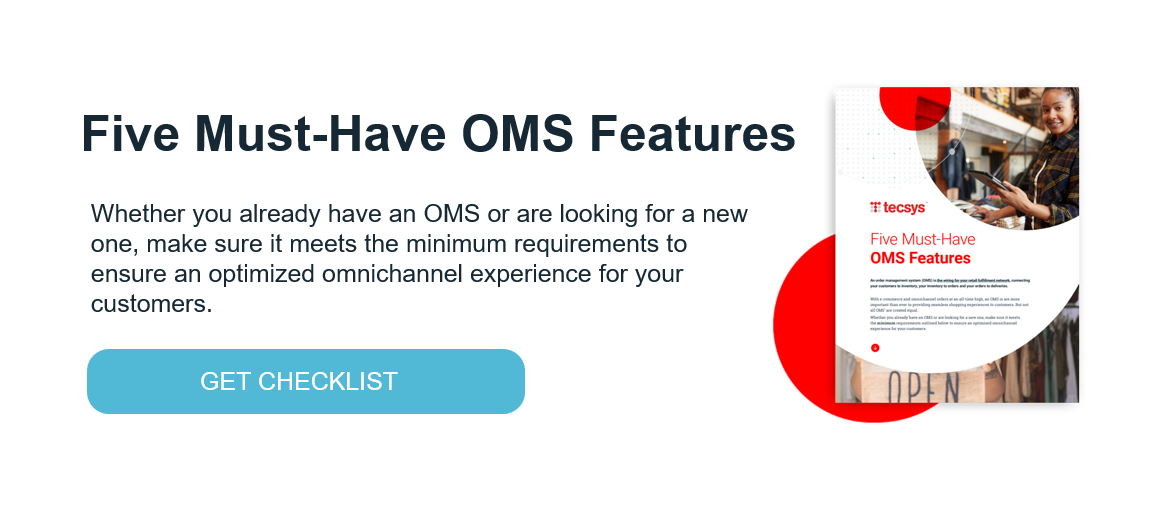What is Happening to Active Inventory Visibility?

Editor’s Note: This post was originally published in November 2018 and has been updated for freshness, accuracy and comprehensiveness.
A recent report from Bain & Company finds that, “As (retailers) start to rethink their supply chain networks, retail and consumer goods companies are targeting three key capabilities to improve responsiveness and speed: omnichannel supply management, predictive planning and flexible operations.” While all three areas are important, omnichannel supply management — of which inventory visibility is a key element — enables you to embrace supply chain agility and optimize your fulfillment processes to compete at the highest level.
What is Active Inventory Visibility?
Active inventory visibility is when a retail website proactively shows whether items are in stock or out of stock. This is the most basic level of information. Better yet, some retailers provide detailed information providing the quantities available. This detailed level is more helpful to the online shopper. But, it can also be used to create a sense of urgency on short supplies. For more on this, read the “Inventory Visibility – Why you Need It?” post.
What is Passive Stock Visibility?
In contrast, passive stock visibility is a capability of many e-commerce systems. Here, stock availability information is only provided if it is negative. In other words, an item will only state that it is ‘out of stock’ once the inventory is depleted. If the item is in stock, then no indication takes place. Hence the term ‘passive’. The challenge with the passive form of stock visibility is that customers are not certain about availability. What happens if the website does not tell you that an item is in stock? Here the consumer is left to guess as to whether the item is available. Worse, they may just presume that the item is not available. Alternatively, they may browse a competitor’s site. If that competitor uses active inventory visibility, it provides the consumer with more information. This will inevitably sway many customers to purchase from the place they know has the right goods.
Active Inventory Visibility Details
When a customer searches online, feedback might be ‘in stock.’ It is not clear where it is in stock, but somewhere in the chain, the merchandise exists. This compared to the store-level active inventory, which lets a customer know whether travelling to the physical store will be worthwhile. Alternatively, it might let them know if they have it delivered or they do a pickup … can they get it fast? For example, when looking for slim fit, size 30 x 34 blue stonewashed jeans, how many are in stock? In our case, the retailer with detailed active inventory visibility might state there are two available. This adds some urgency and might get the consumer to purchase them immediately, to get one of the last two.
 But What About the Competition…
But What About the Competition…
Yes, we all know the argument. If I show my active inventory visibility online, my competitors know what I have. Worse yet, they can map out all my inventory positions and create a counter strategy. From this paranoid perspective, using passive stock views are the answer. Truly, this risk exists. However, there are several questions that come up. Are your competitors so sophisticated, that they can capture this information and analyze it in real time with countervailing actions taken? Remember your inventory positions are changing every minute of every day. In-store purchases, online orders, stock losses, inbound inventory, stock transfers and holds are all happening every minute your stores are open. It would take a highly sophisticated retailer to operationalize these competitive counter maneuvers. Such sophistication would even give the espionage community a run for their money. This scenario is not impossible. But, is your competitor more important than your customer? All retailers should answer ‘NO.’ If so, then focus on what is best and easiest for your customer. The answer is to focus on active inventory visibility.
Real-time, Active Inventory Visibility Is Important
Retailers can use it to create a sense of urgency with customers when there are low levels of supply. This also gives customers the reassurance that the retailer has what they want. It signals to consumers that an order won’t take two weeks for a delivery. It signals that they could drop into the store to pick up their item right away. Failing to provide it puts the retailer at risk of losing customers. All shoppers research products online. Part of that research is figuring out which retailer has what you want. Online is the ultimate place to comparison shop. That means if a shopper does not understand that you have an item, they can easily search your competitor’s site. If the competitor provides active inventory visibility, with the item in stock … well, you just lost that sale. So, the risk retailers are taking by dropping active inventory visibility … is the loss of customers.
Old Technology and Wrong OMS
There are many retailers who have old technology that needs replacing. This includes old legacy systems that were built in-house. Often these projects are exciting at first, but eventually, lose their luster. They may have been good for their time, but with robust off-the-shelf order management systems of today, there is little need for this option. Ultimately, active inventory visibility relies on solid order management technology to drive it. There are also the errors made in OMS selection: some order management systems on the market are light solutions. They weren’t designed with scale in mind or with functional depth as the priority. Don’t lose out on active inventory visibility because you made a poor choice on your OMS selection. In that light, get your copy of Five Must-have OMS Features Checklist. In it, you will discover the importance of a robust system and the questions to ask your vendor.



